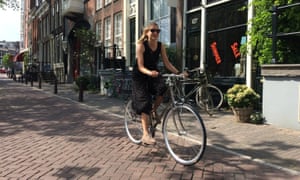A city wants fewer cyclists to use a bike lane.
Yes, you read that right. Oh, but it gets better: that city is in what is often seen as one of the world's most bike-friendly nations.
That country is the Netherlands. The city in question in Utrecht; the bike lane, alongside Vredenburg, is said to be the busiest in the nation. It was widened a few years ago; even so, it's not enough to meet the demand.
So many cyclists ride it because Vredenberg path is the main east-west corridor the city center. As in many older cities, there simply aren't many options available: Other streets dead-end at rivers, canals, railroad tracks or other natural or artificial barriers. (This is also true in some older areas of cities like New York and Boston.) In some places, it isn't possible to build bridges or other ways to navigate those obstacles--and, in some of the more historic and scenic areas of a city like Utrecht, it's too expensive or people understandably don't want to do such a thing.
Also, as the author of the Bicycle Dutch post points out, just as "we all know that more asphalt isn't the answer to too many cars," it's "probably also not the answer to too much cycling." In other words, old European cities like Utrecht have very limited amounts of space on which to build anything, so adding more pavement would defeat one of the purposes of encouraging people to ride: reducing congestion. The city is thus looking at other possible solutions, which including the closure of some streets to motor traffic and turning them into bike routes. Another suggestion includes using a former railway bridge as a crossing for cyclists.
At least it seems that the city is trying to create a comprehensive plan to make movement from place to another safe, convenient and sustainable. Too often, American cities build bike lanes or other transit facilities without a coherent scheme. That, I think, is why too many bike lanes are poorly constructed and maintained and don't offer useful routes, or even connections to other forms of transportation.








